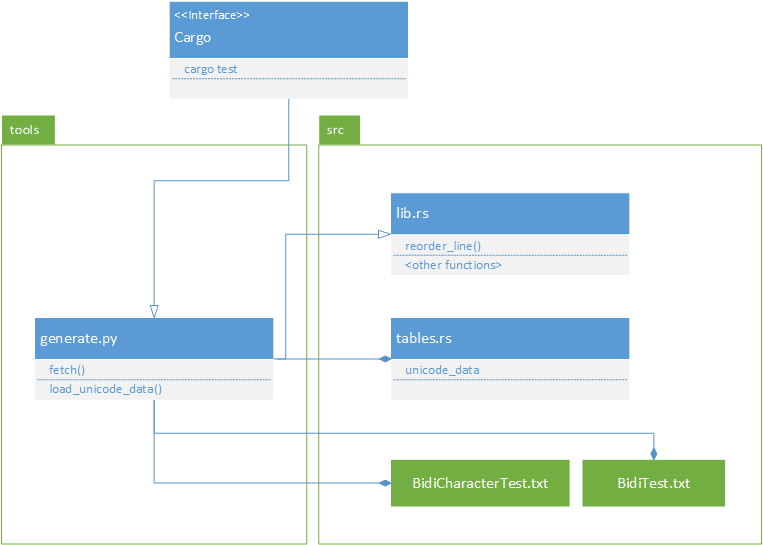CSC/ECE 517 Fall 2015 M1505 Add conformance tests to unicode-bidi and fix conformance bugs
Introduction
Servo
Rust
[Rust] is a new programming language for developing reliable and efficient systems. It is designed to support concurrency and parallelism in building platforms that take full advantage of modern hardware. Its static type system is safe and expressive and it provides strong guarantees about isolation, concurrency execution and memory safety. Rust combines powerful and flexible modern programming constructs with a clear performance model to make program efficiency predictable and manageable. One important way it achieves this is by allowing fine-grained control over memory allocation through contiguous records and stack allocation. This control is balanced with the absolute requirement of safety: Rust’s type system and runtime guarantee the absence of data races, buffer overflow, stack overflow or access to uninitialized or deallocated memory.
Architecture
Project Description
Project Implementation Flowchart
Here is a flowchart which represents the sequence of activities that make up the logical flow of this project
Design Principles
Design Pattern
UML Diagrams
Class Diagram
Here is a class diagram representing the different classes involved and their mutual interaction.
Test Cases
The project involved adding code from BidiCharacterTest.txt and BidiTest.txt so as to ensure that the implementation of the unicode-bidi algorithm always conforms to the specifications defined in the Unicode Bidirectional algorithm. However as part of the initial steps, we did add a few manual test cases that would check for conformance to some of the major steps. Here are some of those test cases:
- Check for LTR by passing the level number
- Check for RTL by passing the level number
- Check for removal of characters according to the Rule X9 of the algorithm
- Check for non removal of characters according to the Rule X9 of the algorithm
- Check for reordering of characters in accordance with the following types of characters:
- Weak LTR
- Strong LTR
- Strong RTL
- Neutral characters
- RTL(Explicit Right-To-Left) Markers (Failing Test Case. The steps to implement this was not implemented till that point in time.)
Video
<TBA>
References
http://www.oodesign.com/design-principles.html https://en.wikipedia.org/wiki/Command_pattern

